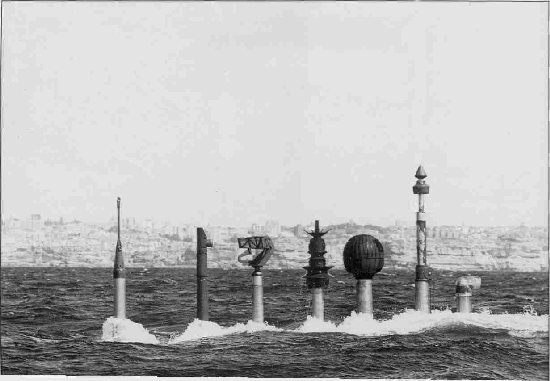- Author
- Haynes, Fred
- Subjects
- Ship design and development
- Tags
-
- RAN Ships
- HMAS Platypus (Shore Base), HMAS Otway II
- Publication
- September 2003 edition of the Naval Historical Review (all rights reserved)
WHILE I CANNOT LAY CLAIM to being a submariner, I worked in the Periscope Workshop at Garden Island Dockyard (GID) and as such was closely involved with submariners in the repair of Oberon periscopes from 1965 till the end of 1995. During the service life of the RAN Oberons in Australia, we never had to return a periscope to Barr & Stroud, the makers, in Glasgow, Scotland. The usual practice by other operators, for major repair, was to return them to the factory. It came close to this in 1971, when an Attack periscope was damaged by hitting a whale.
This occurred when HMAS Otway was conducting trials of a periscope Image Intensifier system developed by Defence Science & Technology Organization (DSTO) at Salisbury in South Australia. Operating in waters off the coast near Jervis Bay they ran into a migrating whale.
After removal by Base staff at HMAS Platypus it was shipped to Garden Island for survey of the damage and assessment of the repairs required. We eventually convinced the Navy that local repair was well within the capability of Garden Island Dockyard.
Luckily the top section of the periscope had only been bent at an angle of 15 degrees, but more importantly had not split and flooded the tube with salt water. The top forging was removed and a new section welded in to replace the bent section. Damaged lenses in the bent area were replaced and adjusted. Successful repair of this periscope helped demonstrate our capability to the Navy.
The Navy’s’ PR unit somehow got wind of this story and contacted the Wales Bank head office in the city. The story was printed in their staff newspaper with photos of the Bank building in the city taken through the repaired periscope to check definition of the image. A case of the ‘Wales’ assisting the repair of damage caused by whales.
The experience of this repair gave us confidence to undertake the repair of the next damaged Attack periscope several years later. An Oberon operating out of Hong Kong hit an object with the periscope while submerged. The object was obviously much more solid than the whale previously encountered. This time the top forging had been bent to an estimated 45 degrees, and there was evidence of scoring on the leading edge of the bend as well as anti-fouling paint embedded in the top window frame screw heads. To compound the damage, attempts were made to lower the periscope and the top forging was bent in the opposite direction as it met the top bearing in the fin. The forging fractured and the periscope flooded.
This particular incident intrigued us for years, as we could never find out from our submariner friends what they had hit. The only answer to our questions was that they ‘had to stay submerged for 12 hours after the event’. Of course this only fuelled our speculation as to what had happened and where they were operating at the time. It was only years later that a chance relating of the story to an ex-submariner revealed that they had hit a ‘Friendly Frigate’

Most of the minor defects suffered by the Oberon periscopes were dealt with by Base Staff of HMAS Platypus. There was a Periscope and Mast workshop located there which stored spare periscopes and masts. These spares were for operational boats that required replacement for one reason or another. The workshop was in charge of a Periscope Qualified CPO (Periscope Tiffy). If major defects could not be rectified or the periscope required major refit, it was sent to Garden Island. On several occasions staff from GID repaired defects using the facilities at Platypus.
Defects sometimes were repaired on board the boat while alongside. One defect, although not serious, was to the electrical conduit fitted to the top of the crosshead of an Attack periscope fitted in HMAS Ovens. On investigation it was found to be flattened and broken from its mounting brackets. The conduit was replaced and the electrical connections checked. Being curious, we asked the ships’ staff how the damage had occurred? ‘It was hit by a Flying Fowl’ was the answer.




